When I was a kid we used to play touch football in the street. Because there wasn’t an offensive line we had to count ten seconds out loud before we could rush the quarterback. When we counted we would use Mississippis because supposedly it takes one second to say “One Mississippi”. Say it ten times and you could rush the quarterback. I was out recently looking for wildlife to photograph when I came across a number of beautiful raptors that caused me to harken back to those days. I found myself counting each of the several birds circling overhead in Mississippis as if I were a kid on the football field. One Mississippi Kite, Two Mississippi Kites, and so on.
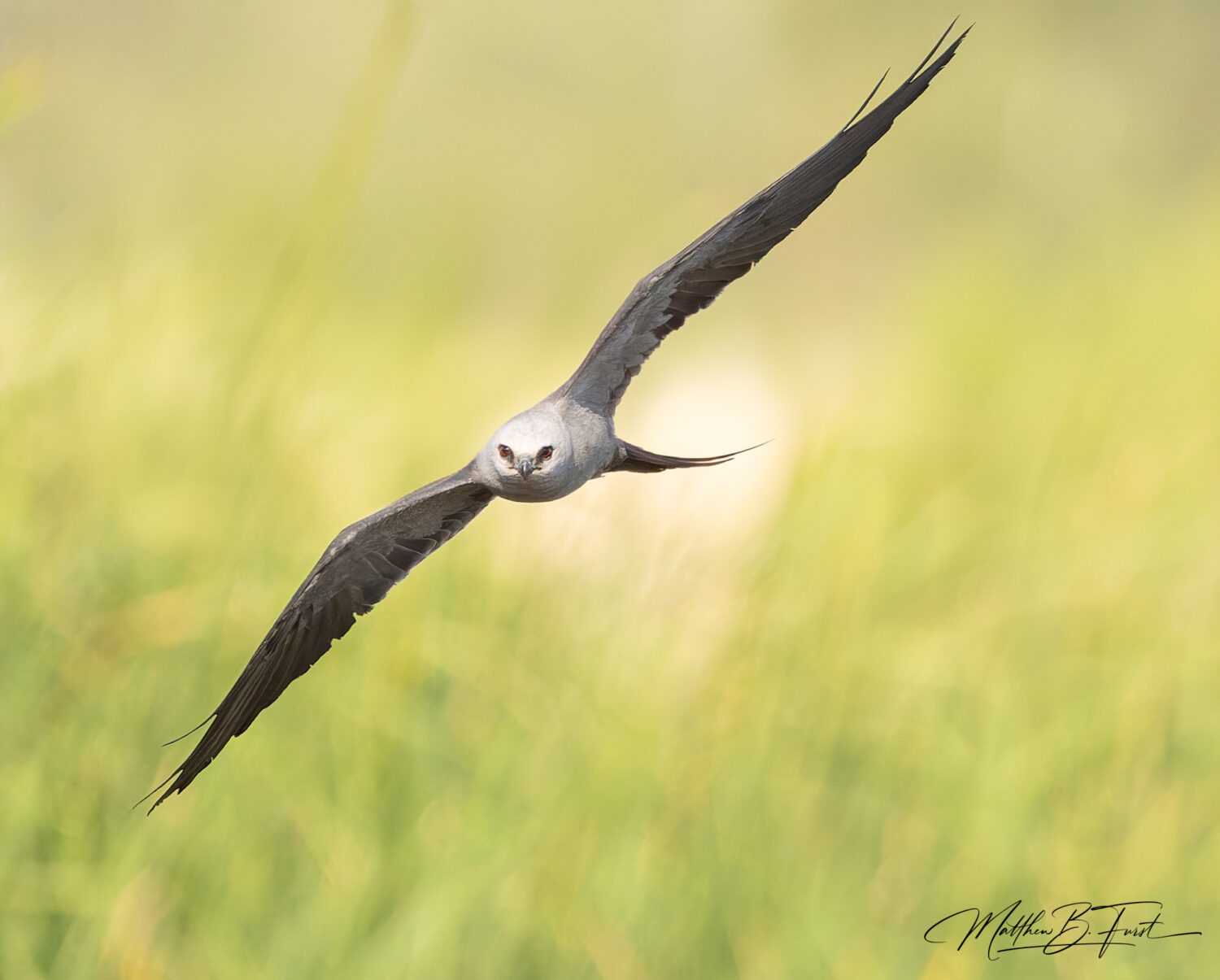
The Mississippi kite (Ictinia mississippiensis) is a remarkable bird of prey known for its elegant flight and impressive hunting skills. These raptors are relatively small, measuring about 12 to 15 inches in length with a wingspan of around 3 feet. Adult Mississippi kites exhibit a sleek, gray plumage with darker wingtips and a pale underside, while juveniles have a more streaked brown appearance. Both adults and juveniles are characterized by their distinctive red eyes. Their aerodynamic build, with long, pointed wings and tails, allows them to navigate the skies with incredible agility and speed, making them a fascinating subject for both bird watchers and wildlife photographers. Adults are gray with darker gray on their tail feathers and outer wings and lighter gray on their heads and inner wings. Males and females look alike, but the males are slightly paler on the head and neck. They both have piercing red eyes. They are prevalent in West Texas throughout the spring and summer months. They provide a great opportunity to work on bird in-flight photography.
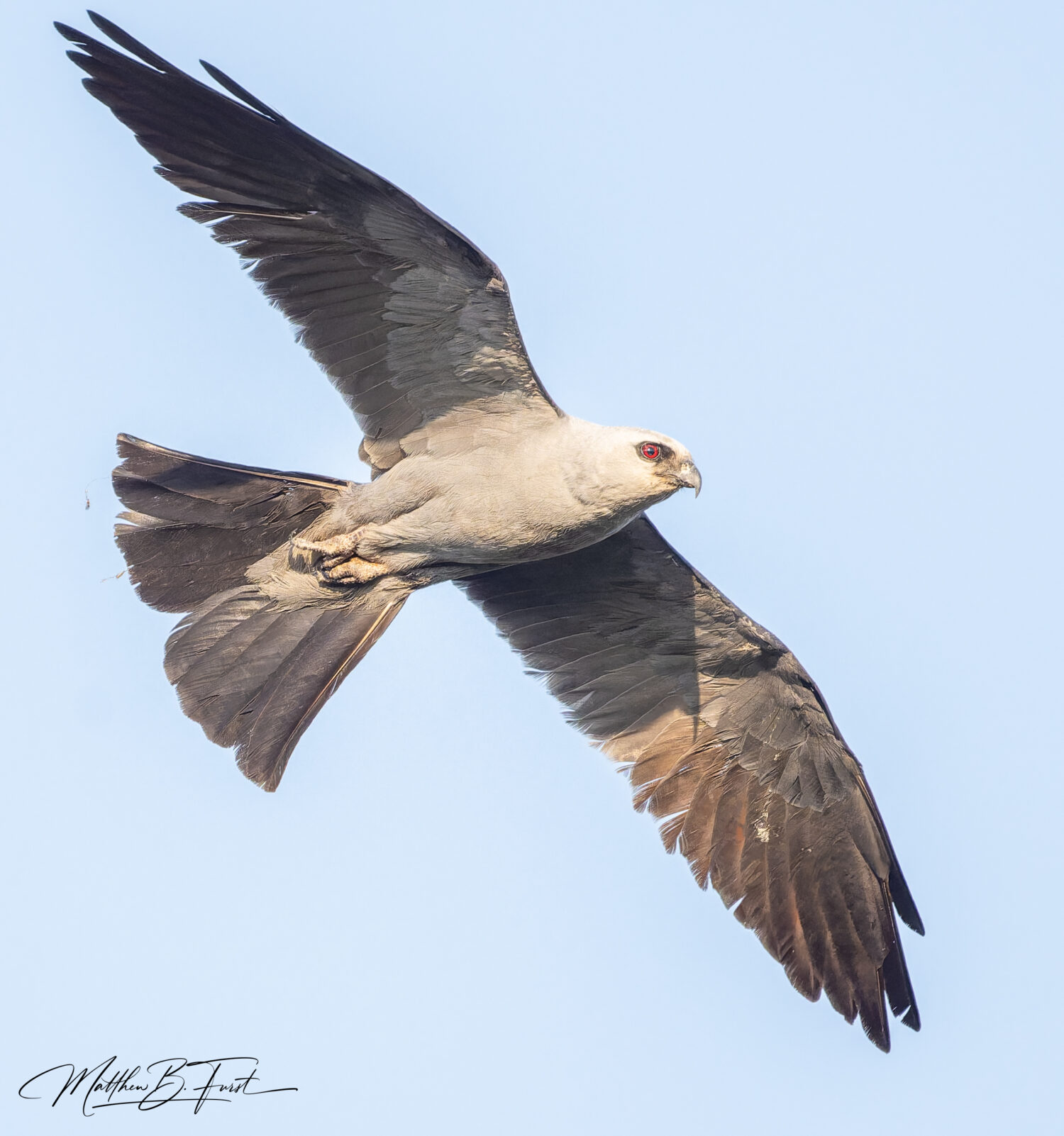
Mississippi kites are primarily found in North and Central America. During the breeding season, which spans from May to August, they inhabit the southeastern United States, particularly in states such as Texas, Oklahoma, Arkansas, and Mississippi. These birds prefer open habitats such as savannas, grasslands, and woodlands, often near bodies of water like rivers and lakes. They are also known to adapt to suburban areas with suitable nesting sites. In the winter, Mississippi kites migrate to South America, particularly Argentina and Brazil, where they continue to thrive in open and semi-open landscapes. Mississippi kites primarily feed on insects, especially during flight, capturing prey such as dragonflies, grasshoppers, and cicadas with remarkable agility. Prior to swooping in for the kill, they often circle in a predictable pattern allowing inexperienced wildlife photographers opportunity to practice in flight shots.
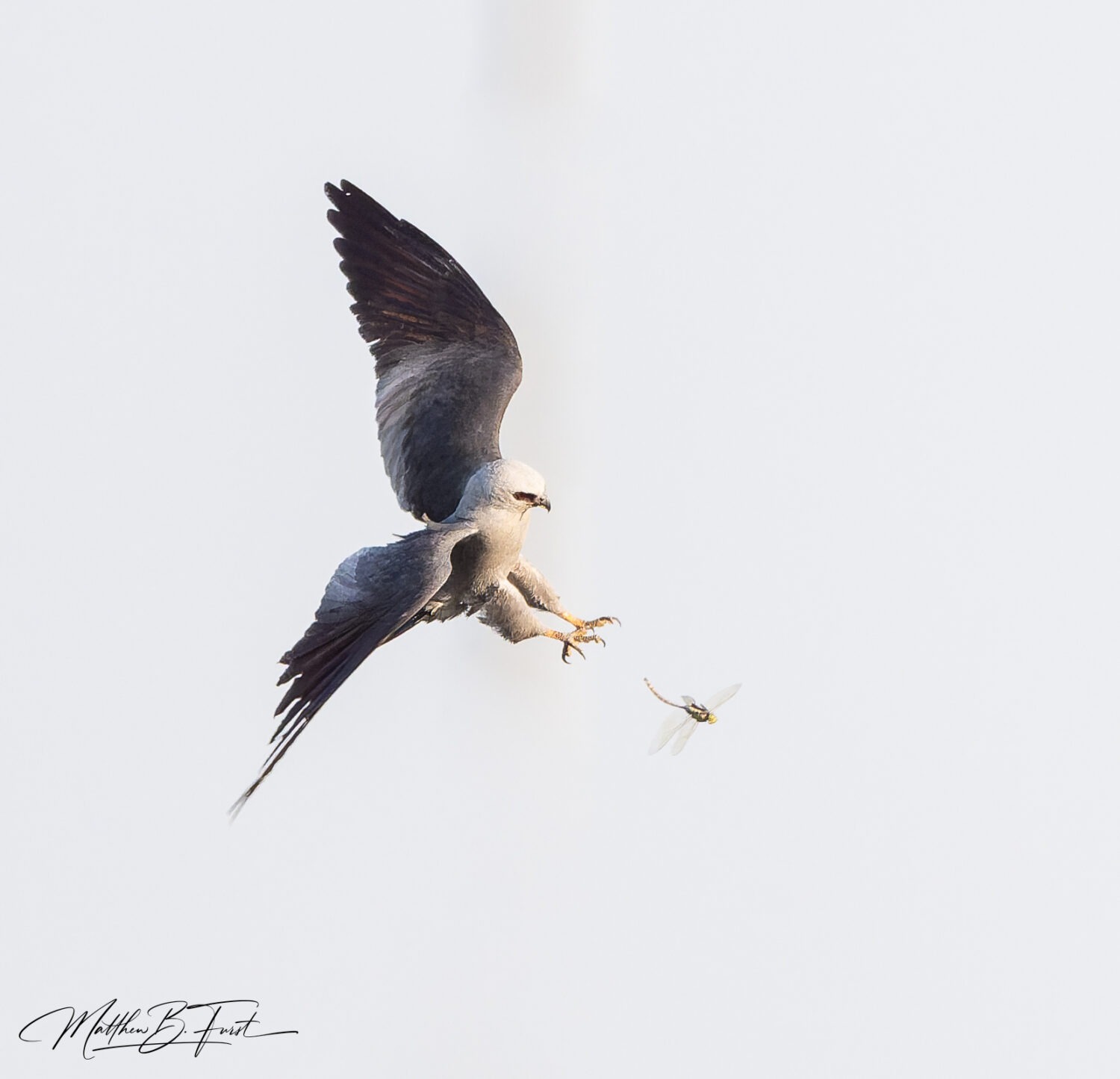
To locate Mississippi kites, it’s essential to understand their seasonal migration patterns and preferred habitats. During the breeding season in the southeastern United States, they can be spotted soaring gracefully over open fields, woodlands, and along waterways. Early morning and late afternoon are prime times for observing their aerial acrobatics as they hunt for insects. Listen for their high-pitched calls, which can help pinpoint their location. Young kites have banded tails and streaked bodies. It is 12 to 15 inches (30–37 cm) beak to tail and has a wingspan averaging 3 feet (91 cm). Weight is from 214 to 388 grams (7.6-13.7 oz). Their call is a high-pitched squeak, sounding similar to that of a squeaky toy. Additionally, look for communal roosting sites where multiple kites may gather. In suburban areas, they may nest in tall trees in parks or large yards, providing opportunities for close observation.
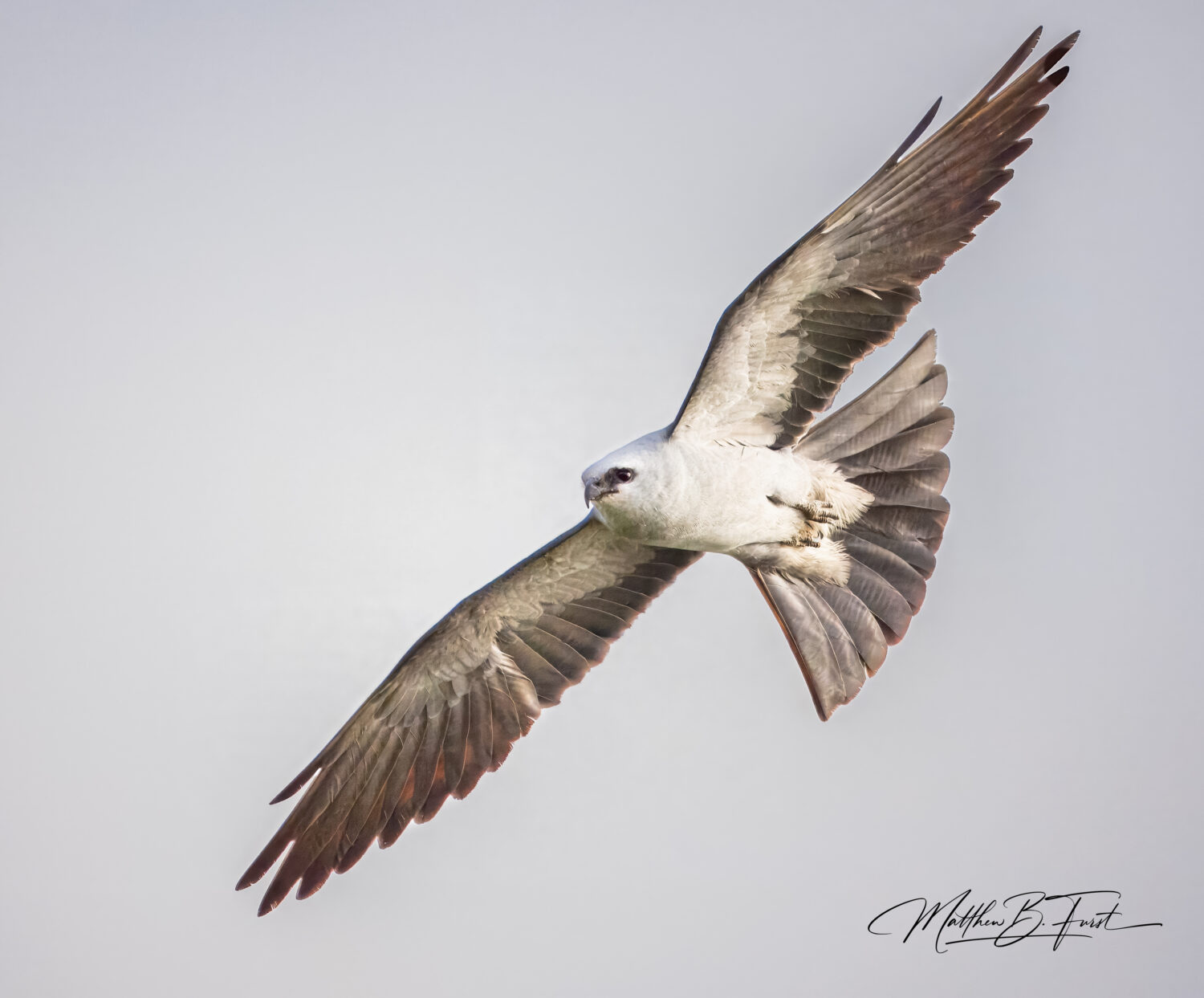
Their diet consists mostly of insects which they capture in flight. As a result, finding a pond with a healthy population of large dragonflies will often allow you to find Kites feeding on them. They fly over the pond until they spot their prey then swiftly swoop down grasping them from the air. They often eat their prey in flight. These behaviors provide for interesting wildlife photos as well.
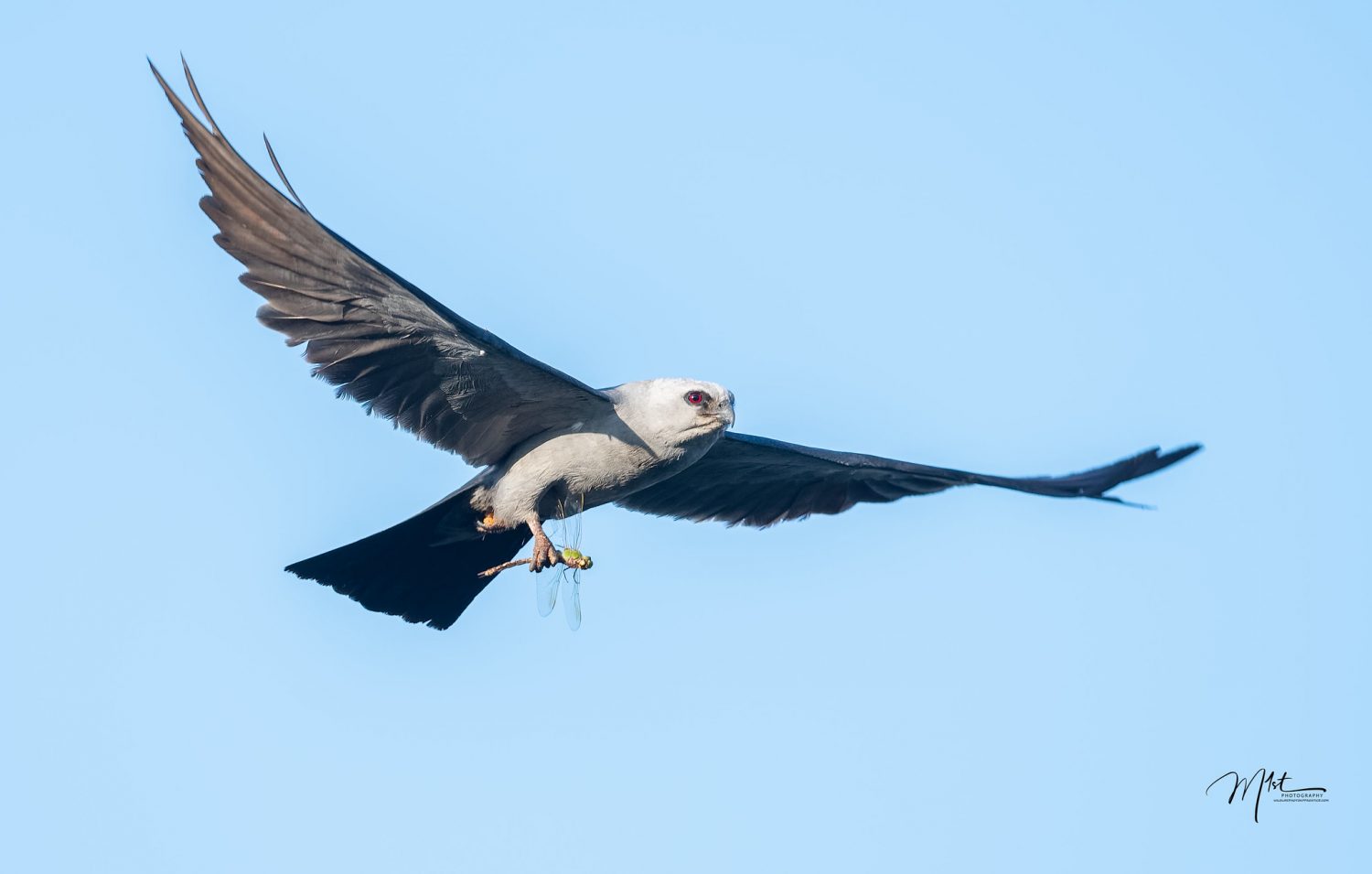
Photographing Mississippi kites can be a rewarding experience, but it requires some preparation and understanding of their behavior. Since these birds are often seen in flight, capturing sharp images necessitates the use of high shutter speeds. A shutter speed of at least 1/2000th of a second is recommended to freeze their rapid movements. Utilizing continuous autofocus mode will help keep the bird in focus as it moves through the frame. For those new to photographing birds in flight, practicing on slower-moving subjects can be beneficial before attempting to capture the swift Mississippi kite.
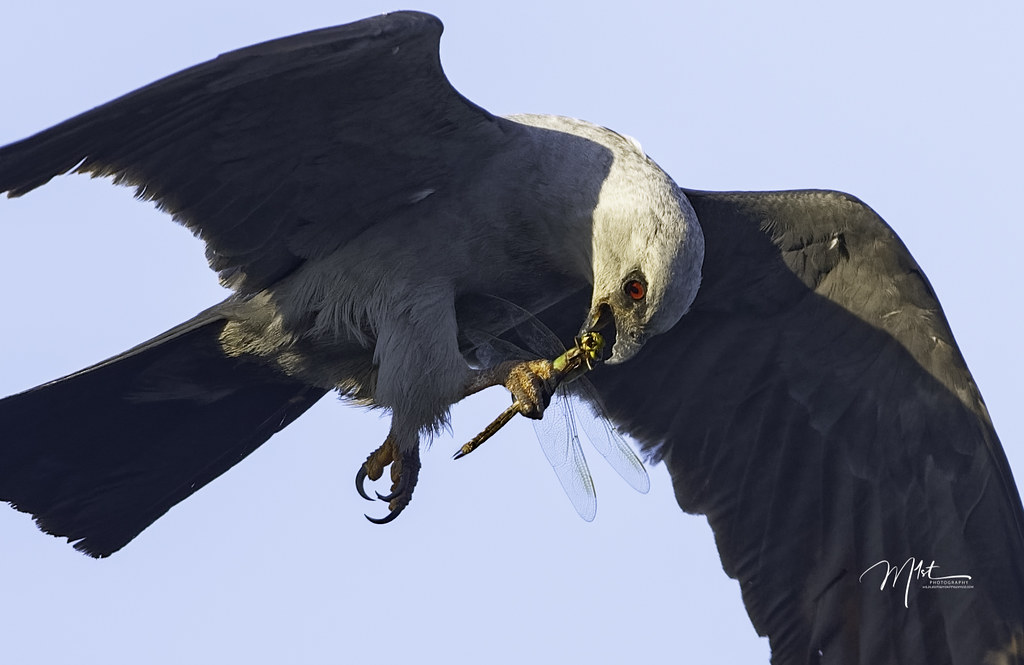
For best results, wildlife photographers should use a telephoto lens with a focal length of at least 300mm to ensure the bird fills the frame. Image stabilization is crucial when shooting handheld, but using a tripod or monopod can provide additional stability, especially when tracking the bird’s flight. A gimbal head on a tripod can offer smooth panning and tilting motions, essential for following the kite’s dynamic movements.
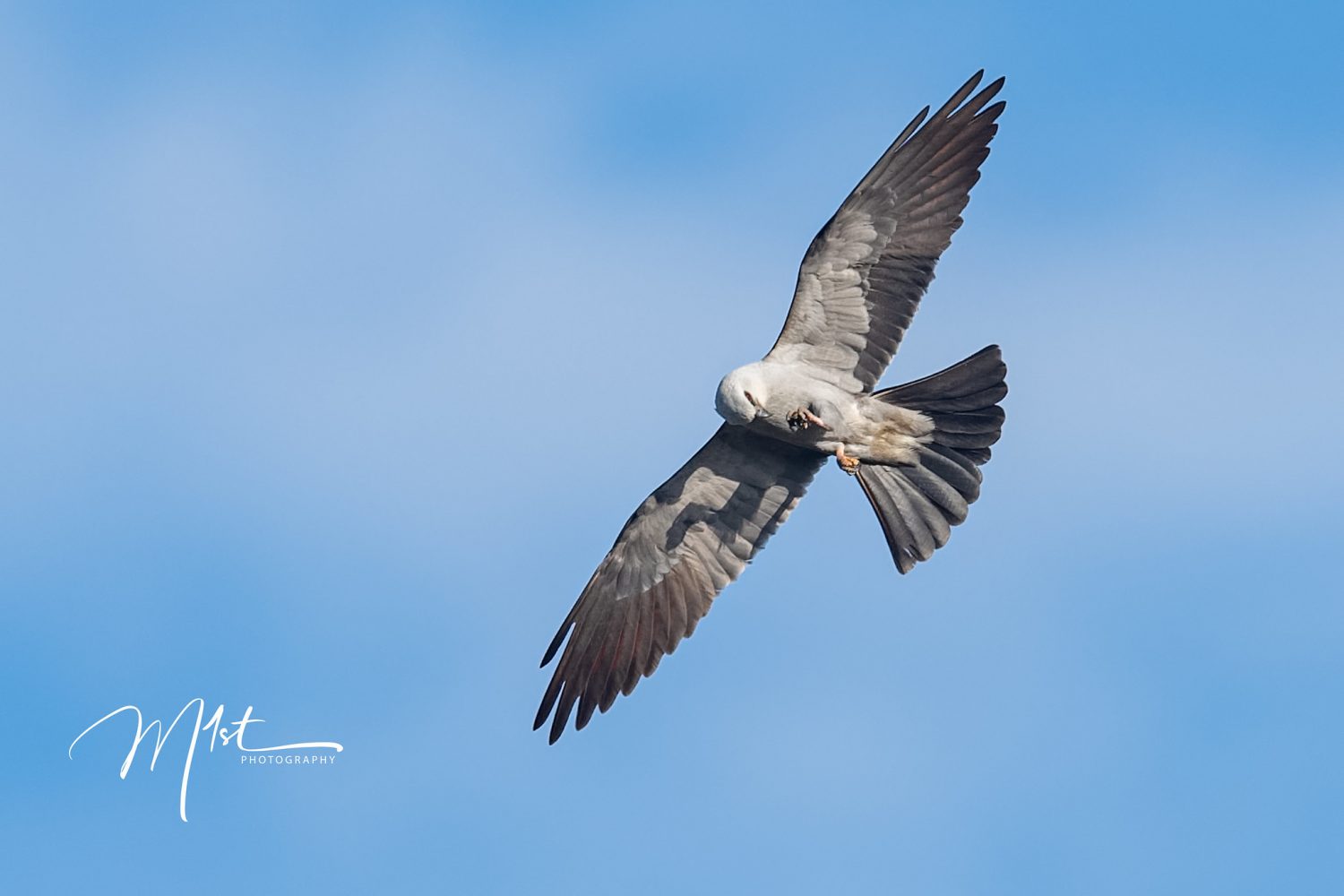
These birds can be difficult to photograph from the standpoint of exposure. They are very light gray, almost white in areas over their body and head while their wings are dark gray transitioning to almost black. By default, I always shoot in manual mode. My initial approach for any bird in flight situation is to prioritize shutter speed and adjust the shutter speed to no slower than 1/1250th of a second, and preferably 1/1600th. I set the ISO to the maximum I can tolerate to achieve these minimum shutter speeds, for my D500 that’s about ISO 1000 max. I don’t mind shooting wide open at F4 if needed, but prefer F5.6 or higher to get some increase in depth of field but only if light allows. As with every situation I try to take a few initial shots and then go to the histogram. For most birds with white or very light colors you should try not to crowd the right of the histogram in order to prevent blown highlights. From a noise standpoint, however, exposing to the right and bringing down highlights in post-processing is preferable to underexposing and bringing up shadows in a high ISO situation.
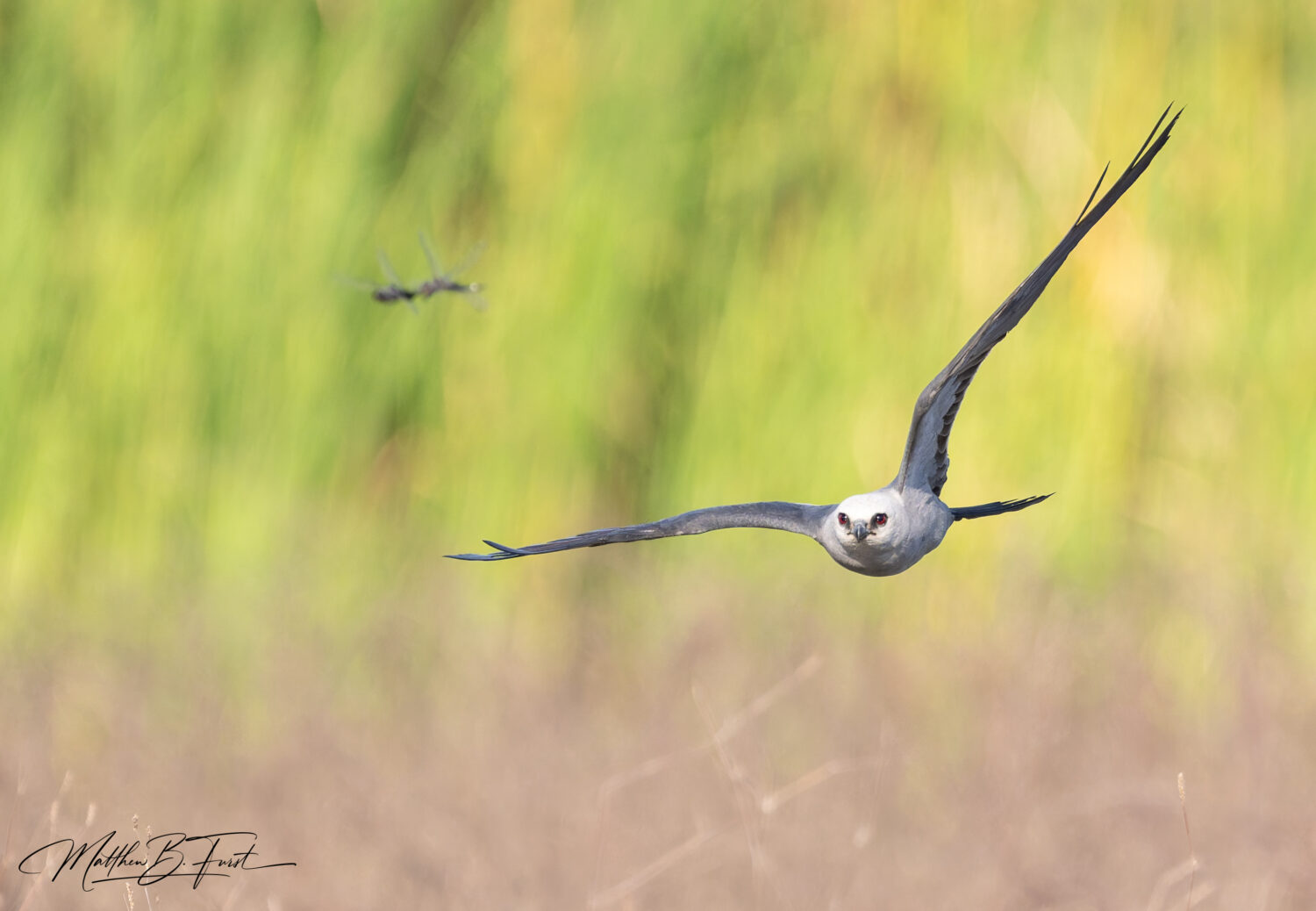
The next time you are out looking for something to shoot, look up and see if you can find a Mississippi Kite. Just don’t count too many of them in a row or you may get rushed and tackled by some little kid playing football nearby.
